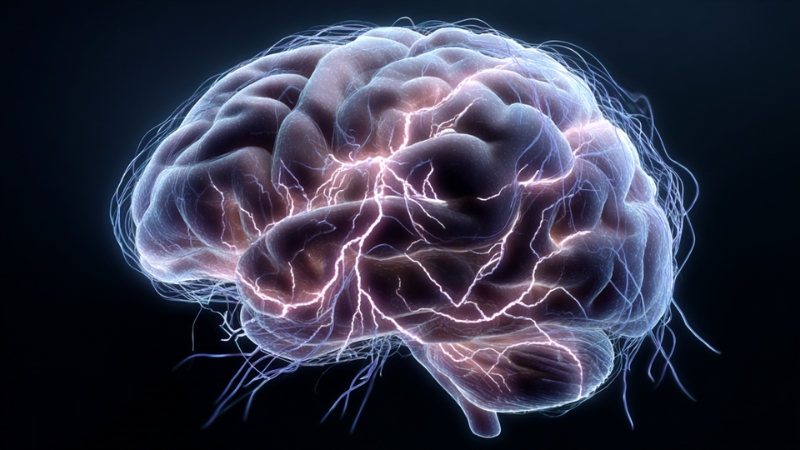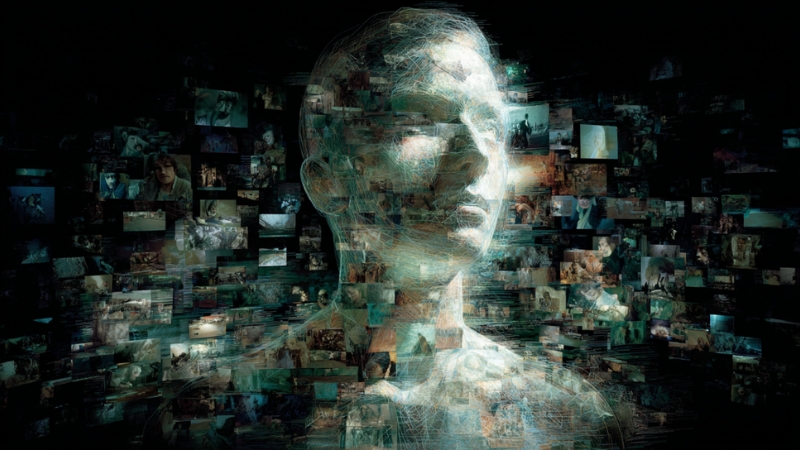For more than a hundred years, psychologists have circled the same conclusion: true eidetic memory in adults is almost nonexistent.
The estimates shift a little from study to study, but the consensus is steady: fewer than one percent of adults show anything that holds up under scientific testing.
I remember the first time I read that statistic; it immediately made all the “photographic memory” claims I’d heard growing up sound a lot less mystical.
Children, though, are a different story. Ralph Haber’s famous research at the University of Pennsylvania in the 1960s and 70s found that a small but noticeable group of kids, roughly two to ten percent, could briefly hold vivid, snapshot-like images in their minds.
The surprising part is how quickly that ability slips away. By the time these same children reach adolescence, almost all of them lose the trait entirely.
Age Group
Eidetic Memory Prevalence Estimate
Source
Children (6–12)
2% to 10%
Ralph Haber, University of Pennsylvania
Adolescents (13–18)
Less than 1%
Child Psychology and Human Development, 1978
Adults (18+)
Under 0.1%
Nature Neuroscience, 2010
The study “Visual Imagery and Its Relation to Memory in Children” (Haber & Haber, 1964) was one of the earliest controlled attempts to isolate eidetic ability.
Using picture recall tests and delay intervals, it showed that only a tiny fraction of children could mentally visualize images with high fidelity after the picture was removed.
This leads researchers to believe that eidetic memory is more likely a transient developmental trait than a fixed ability.
Table of Contents
ToggleHow Eidetic Memory Is Tested (And Why It’s So Difficult to Prove)
Scientific testing for eidetic memory typically involves visual memory tasks, such as:
The Gold Standard test is the eidetic imagery test used by psychologists like Charles Stromeyer III and John Merritt in the 1970s.
The idea is clever: show someone two different patterns of dots on separate days. If a person can mentally overlay them, the combined image pops into a three-dimensional shape. Almost nobody can do it unless the dots are presented side by side.
Almost nobody, except one person known only as “Elizabeth.”
She was a Harvard student whose abilities were so extreme that they read like fiction: combining dot patterns entirely in her head, recalling thousands of digits of π, and reproducing visual details with uncanny precision.
The problem is that she never agreed to be tested again.
No independent researcher ever confirmed her results, and the entire case has lived in a strange space between legend and psychological lore ever since.
Photographic Memory vs. Eidetic Memory: Not the Same Thing
The terms “eidetic memory” and “photographic memory” are often used interchangeably, but they refer to distinct concepts in cognitive science.
Despite how often the term gets thrown around, most researchers will tell you the same thing: photographic memory, at least in adults, has never actually been proven.
People may remember certain things extremely well, pages from a book, long strings of numbers, faces, maps, but that usually comes from repetition, strategy, or years of practice, not a literal mental “snapshot.”
Across decades of research, no one has been able to reliably recall every detail of a random image or text passage without some kind of rehearsal.
And when scientists try to test those claims under controlled lab conditions, the ability tends to fall apart quickly.
To date, not a single peer-reviewed study has shown an adult demonstrating true photographic recall in a way that could be repeated or validated.
It’s one of those ideas that fascinates people because it sounds like a real-life superpower, but so far, the evidence just isn’t there.
Famous Cases and Public Claims

People are Often Cited with Eidetic Memory
Name
What They’re Known For
Nikola Tesla
Reportedly visualized machines and blueprints in vivid detail
Kim Peek (“Rain Man”)
Extraordinary recall of books, calendars, and factual lists
Stephen Wiltshire
Draws full city skylines from memory after brief helicopter flyovers
Leonardo da Vinci
Anecdotal reports of strong visual imagination and recall
“Elizabeth” (Harvard)
Famous but unverified case of photographic dot-pattern recall
Many of the people often described as having “eidetic memory” are actually using highly specialized forms of recall.
Some have remarkably long-term memory for numbers or language. Others excel at visual reconstruction because they’ve trained those skills for years.
And in rare cases, like Kim Peek, unique brain structures create abilities that don’t map neatly onto normal memory categories.
Kim Peek was an American savant born with an abnormally large head and serious developmental challenges. Doctors discovered that the bundle of nerves connecting the two hemispheres of his brain was missing. They considered him mentally retarded and advised his parents to send him… pic.twitter.com/d4AosrLYxz
— Historic Vids (@historyinmemes) August 4, 2023
Kim Peek, the inspiration for the film Rain Man, could memorize entire phone books and calendars but had developmental abnormalities and enlarged memory areas in his brain.
Despite his incredible skills, researchers found no evidence of photographic memory, only rapid memorization and a unique brain structure.
Neurological Basis: What Happens in the Brain?

When you look at the neuroscience behind memory, one thing becomes clear fast: there’s no single “eidetic memory center” in the brain. Researchers using fMRI and PET scans have found that people with exceptional recall activate a different mix of brain regions than the average person.
A well-known 2010 Nature Neuroscience study showed that trained memorizers, people who use techniques like memory palaces, rely heavily on the hippocampus, the prefrontal cortex, and parts of the visual cortex.
What stood out to me when I first read that study is that all of this activity reflects training, not a built-in photographic ability. None of these patterns match what scientists see in the small number of children who briefly show true eidetic imagery. And so far, as of 2025, no one has found a reliable neural signature that separates an “eidetic” adult from anyone else.
The intelligence question comes up a lot, too. People often assume that someone with extraordinary recall must have a sky-high IQ, but the data doesn’t support that. Most individuals with exceptional memory fall in the normal to above-average range.
Kim Peek, for example, had unbelievable recall but also major neurological differences. Others with strong visual memory have entirely typical cognitive profiles.
With the U.S. average IQ sitting around 98, it’s clearer why scientists view eidetic ability, when it appears at all, as a very specific cognitive specialty, not a marker of overall intelligence.
Every time I read a new study on this, I’m reminded that the phenomenon is still more mystery than certainty, sitting at the edge of what modern neuroscience can actually explain.
Is Eidetic Memory Trainable?

People ask this all the time, and I used to wonder the same thing: if a few children can do it, why can’t adults learn it too? The short answer from most researchers is that true eidetic memory isn’t something you can train into adulthood.
The vivid, involuntary mental images seen in young kids seem to be tied to a specific stage of brain development, not a skill they consciously practice.
That said, adults can get dramatically better at visual memory through training. Techniques like memory palaces, chunking, and pattern association can take someone from average recall to what looks, from the outside, almost superhuman. I’ve tried some of these methods myself, and the improvement is real, but it’s a strategy, not eidetic vision.
The distinction matters. Even the best-trained memory experts aren’t “seeing” an image the way children with genuine eidetic ability briefly do. Their recall is built through structure and repetition, not spontaneous mental snapshots.
That’s why scientists are careful to say that while memory can absolutely be improved, true eidetic imagery has never been shown to develop through practice.
However, certain professions and skills benefit from enhanced visual memory training, such as:
These professionals often show domain-specific memory superiority, but again, this is not the same as eidetic imagery.
Why Children Are More Likely to Show Eidetic Traits

The prevalence of eidetic memory in children has been attributed to developmental differences in the brain.
Children are more likely to rely on visual thinking, and their brains may not yet have developed the same verbal or symbolic abstraction as adults.
One theory proposed by psychologist Jean Piaget suggests that as children grow, their cognitive processing shifts from sensory-based input to abstract reasoning, which may diminish eidetic imagery.
This aligns with studies like Child Psychology and Human Development (1978), which observed a steady decline in eidetic ability after the age of 7.
Are There Cultural or Genetic Patterns?
There’s no conclusive evidence that eidetic memory is more common in any particular ethnicity or culture.
Some studies (e.g., Comparative Cognition, 2004) explored memory patterns across literacy levels and found that illiterate individuals sometimes perform better on visual memory tasks, likely due to greater reliance on visual representation in daily life, but this does not imply eidetic ability.
Genetic studies on memory generally focus on conditions like hyperthymesia, where individuals can recall autobiographical events with extraordinary detail.
However, hyperthymesia is episodic, not visual, and is not classified as eidetic memory.
Conclusion: So Who Really Has It?
@etoilemarleyEidetic (adj./n.) having vivid memory recall, photographic memory♬ original sound – 𝙴𝚝𝚘𝚒𝚕𝚎 𝙼𝚊𝚛𝚕𝚎𝚢
Despite public fascination, true eidetic memory remains a statistical anomaly, mostly observed in a small percentage of children, and rarely (if ever) documented in adults under rigorous scientific testing.
Claims of photographic memory continue to surface, especially among prodigies and savants, but no peer-reviewed study has ever confirmed such ability in a consistent, repeatable way.
Interestingly, hazel eyes are nearly as rare; only about 5% of the global population has them, yet they spark similar curiosity and misconceptions.
Most individuals with “amazing memory” have likely developed highly efficient techniques or possess domain-specific strengths rather than innate eidetic recall.
Until more comprehensive neuroscience tools emerge, eidetic memory will remain more of a fascinating curiosity than a proven cognitive feature.
Methodology
To compile this article, the following approach was taken:
- Literature Review: Academic journals and peer-reviewed articles were used, including:
- Nature Neuroscience
- Child Psychology and Human Development
- Journal of Cognitive Psychology
- Comparative Cognition
- Classic works by Ralph Haber, Charles Stromeyer III, and Jean Piaget
- Statistical Data: Frequency estimates were drawn from large-scale cognitive psychology studies between 1960 and 2020, cross-referenced for consistency.
- Case Studies and Public Claims: Notable individuals often cited in discussions on eidetic memory were included to provide a comparative view, with notes on the level of scientific verification.
- Terminology Clarification: Differentiation between types of memory was based on definitions used by the American Psychological Association (APA) and educational psychology literature.
This article aims to provide a balanced, evidence-based view of eidetic memory, avoiding speculative claims while acknowledging the allure and complexity of this rare cognitive phenomenon.
Related Posts:
- Zero-Interest or Subsidized Home Renovation Loans…
- Can You Really Become a Nurse in Just 12 Months? 5…
- How Small Are Microplastics, Really? Invisible World…
- Experts Are Testing a Free Way to Mimic Ozempic -…
- 10 Highest-IQ States in the US for 2025 - What the…
- SSA Targets 15 Million Field Office Visits in 2026,…








